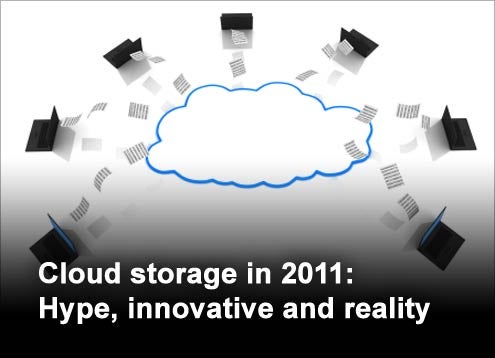There’s a significant difference between managing storage and data that most IT organizations have yet to come to appreciate.
Managing storage typically means allocated space for data on a piece of hardware so that the application can access it as quickly as possible. Managing data means knowing something about the value of that information to the business and, based on that information, storing it in the right cost-efficient place so that it can be accessible at the right time.
IBM’s Storage Group has come up with four predictions for 2011 that include the rise of storage in the cloud, the explosive growth of data, and the importance of IT as a service. But the fourth prediction, the need to focus on data management rather than simply maintaining storage systems, is the one that IT organizations are likely to find the most challenging.
This is because in the absence of any real input from the business, IT organizations tend to treat all data equally. There are, of course, primary and secondary storage systems. But all the data in the primary storage systems is treated equally regardless of its business value.
Steve Wojtowecz, vice president of storage software development for IBM, says this will change in 2011 as customers gain access to more policy-driven data management tools. For example, customers will need to distinguish between “hot data” that customers need ready access to, such as purchasing trends or energy use data, versus “Cold data,” such as anything to with government regulations such as HIPAA.
Managing data with different priorities and time sensitivities will require tiered storage that enables clients to automate the management of critical and secondary data differently. Those tiers, adds Clod Barrera, a distinguished IBM engineer and chief technologist for the IBM Storage Group, will make use of various storage technologies — solid state drives, flash, disk and tape storage – that will be managed under a common management framework to achieve those goals.
But unless the IT organization has a meaningful conversation about the value of certain data and the costs associated with managing it, they will simply wind up throwing more IT at the problem rather than solving the problem.
There has been an ongoing debate over IT alignment with the business ever since the first IT systems were installed. But none of those issues, or for that matter anything to do with compliance, security or cloud computing, can ever be resolved until IT and the business come to terms on the real value of the data.
Click through for four storage predictions for 2011.
Implementation has been hampered by the combination of stagnant budgets and quickly growing data, as storage capacity continues to grow at a rate of nearly 60 percent per year, according to IDC.
Among the different cloud models – private, public and hybrid – public cloud usage of storage by enterprises will grow the slowest as people are concerned about privacy of their critical information. According to Gartner, through 2012, Global 1000 IT organizations will spend more money building private cloud computing services than on offerings from public cloud-computing service providers.
Every day, 15 petabytes of new data is created. Customer demands are forcing the industry to innovate based on their needs with solutions that:
- Integrate virtual storage with other virtual system elements (servers and networks) to create fully virtual systems.
- Lower cost of technologies, with software aggregation to create large-scale, high-performance or high-availability solutions.
- Improve system efficiency with real-time compression, deduplication and data migration.
Service management software is essential in ensuring that the IT infrastructure maps to business policies. The key differentiator will be providers that can offer this service management layer with servers, storage, software and networking under one holistic offering.
The objectives of the service management layer are:
- Adjusting operation of the infrastructure against the business goals and policies.
- Improving responses to hardware failures, new policies, or new business opportunities.
- Optimizing efficiency in the use of infrastructure assets
Data is growing beyond IT budgets’ ability to provide storage to keep it in. At the same time, there is a strong desire to use data as a tool for business innovation while meeting regulatory requirements for data security, retention and access. This means prioritizing massive amounts of different types of data. Managing data with different priorities and time sensitivities requires tiered storage that enables clients to manage critical and secondary data differently. Clients will increasingly mix various storage technologies — solid state drives, flash, disk and tape storage — to achieve the right mix.







